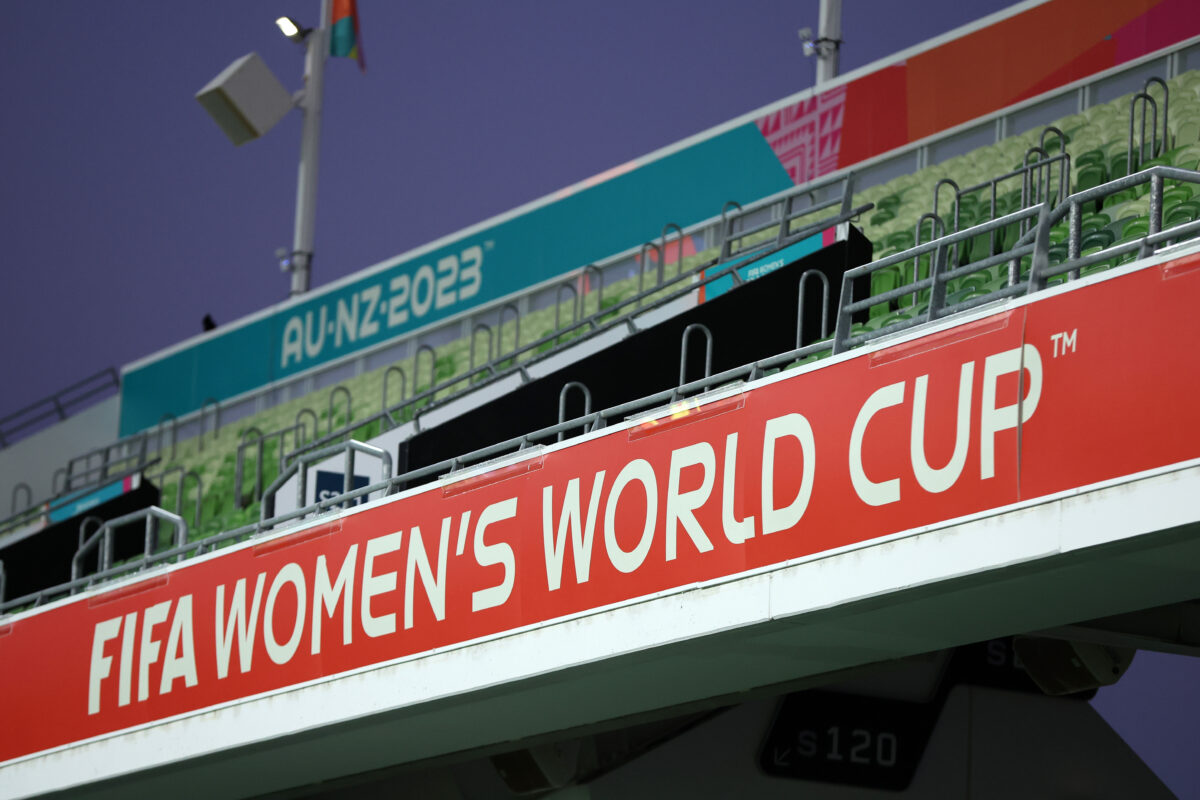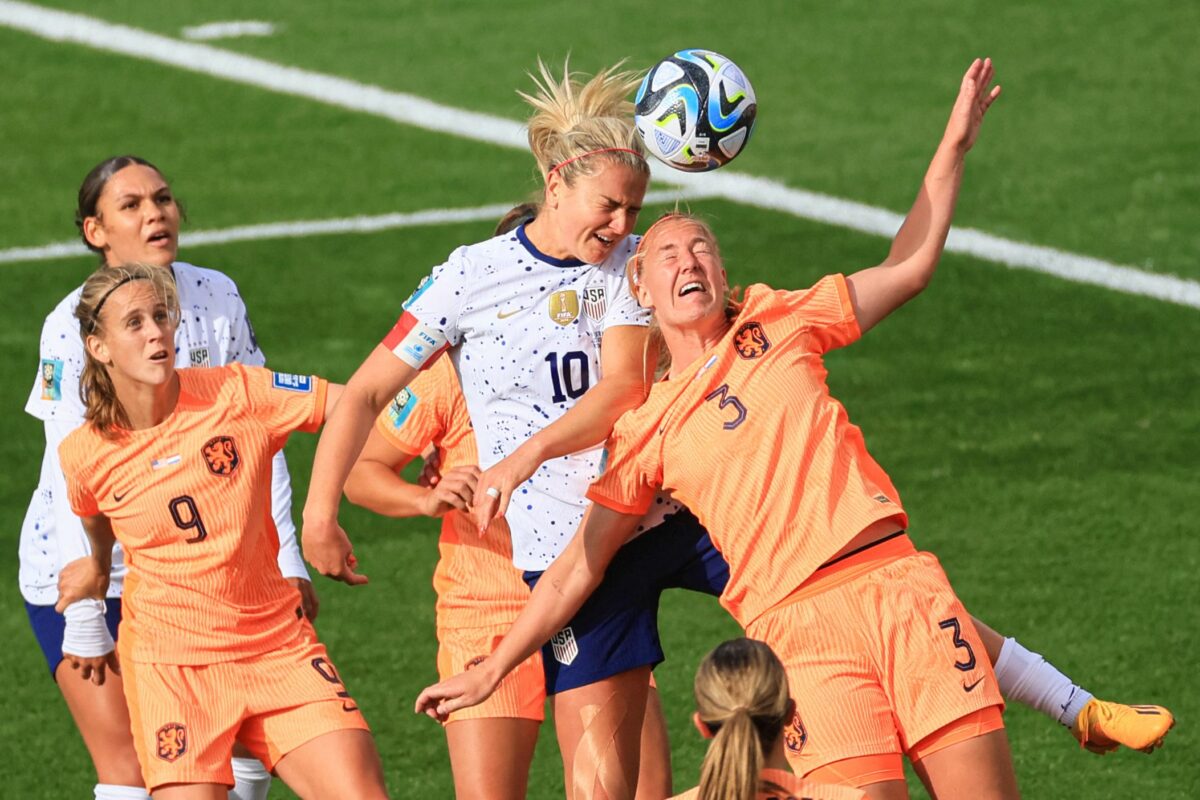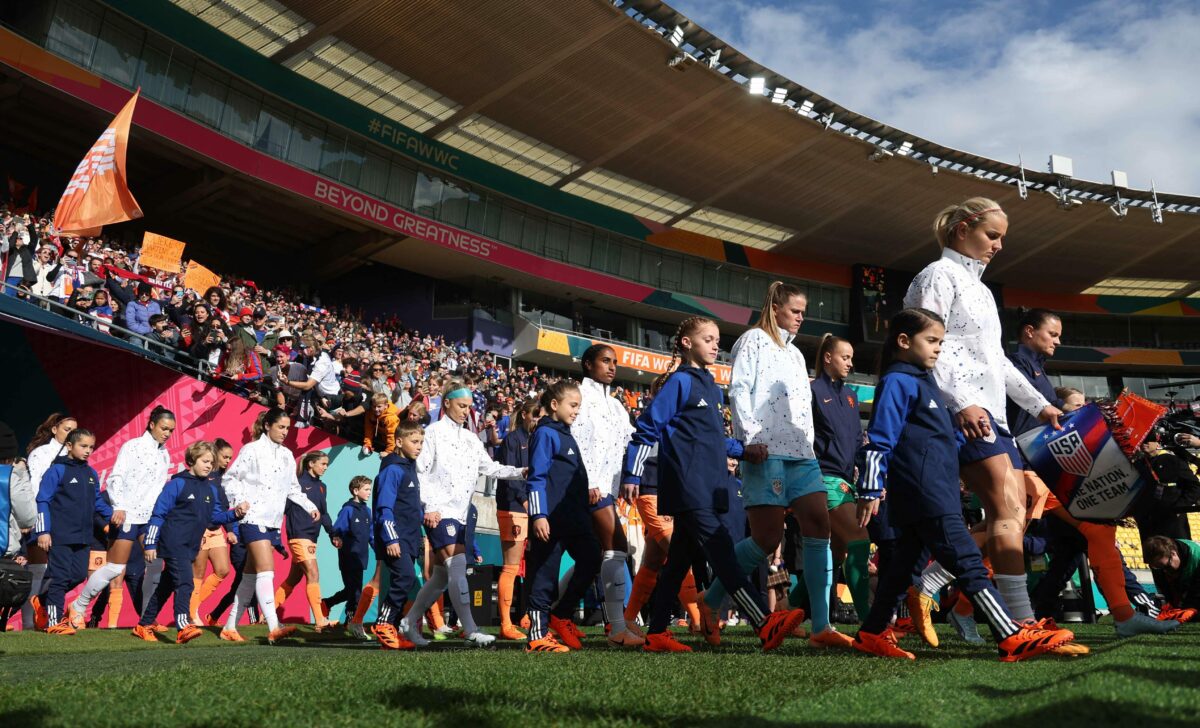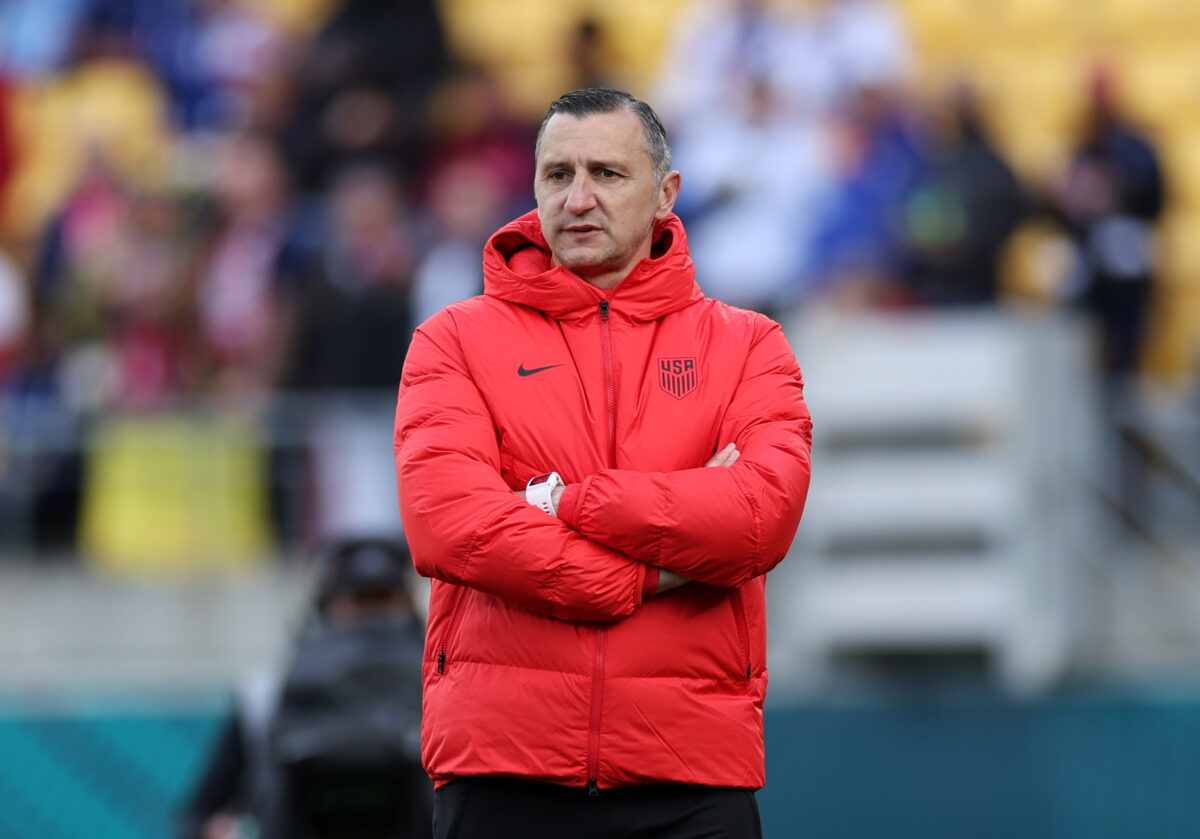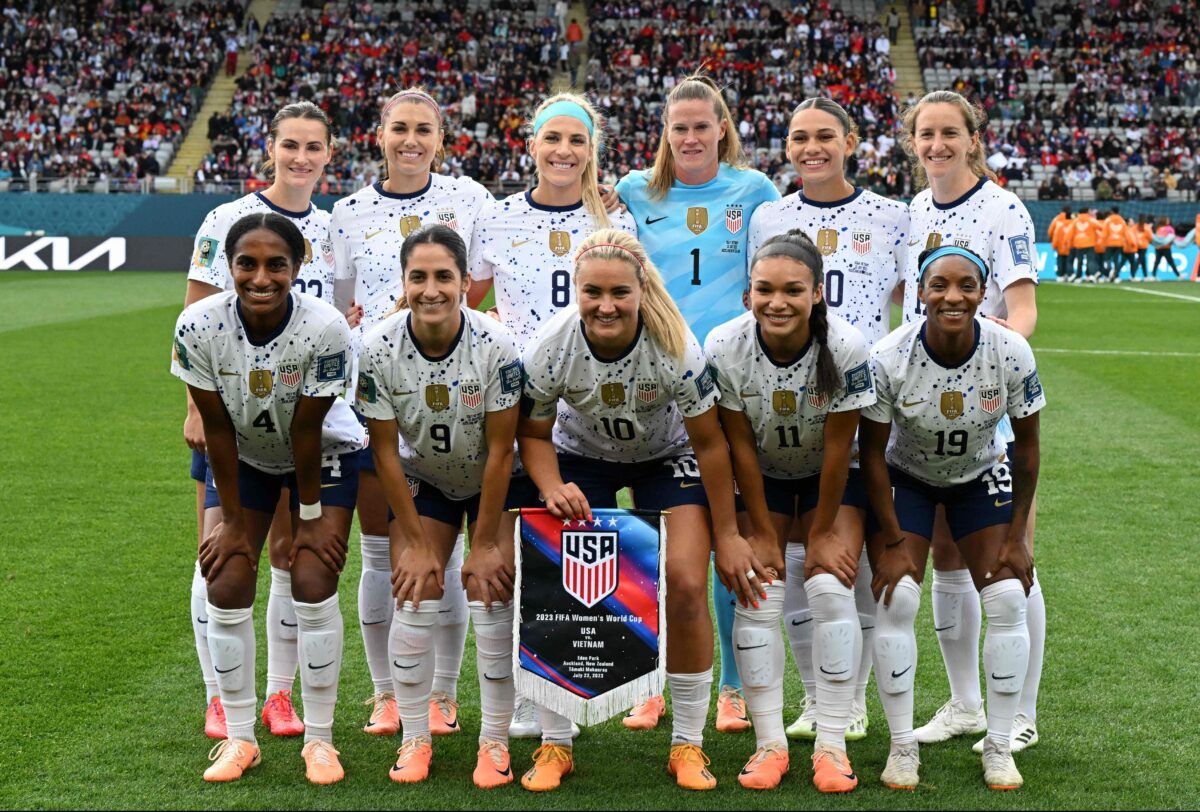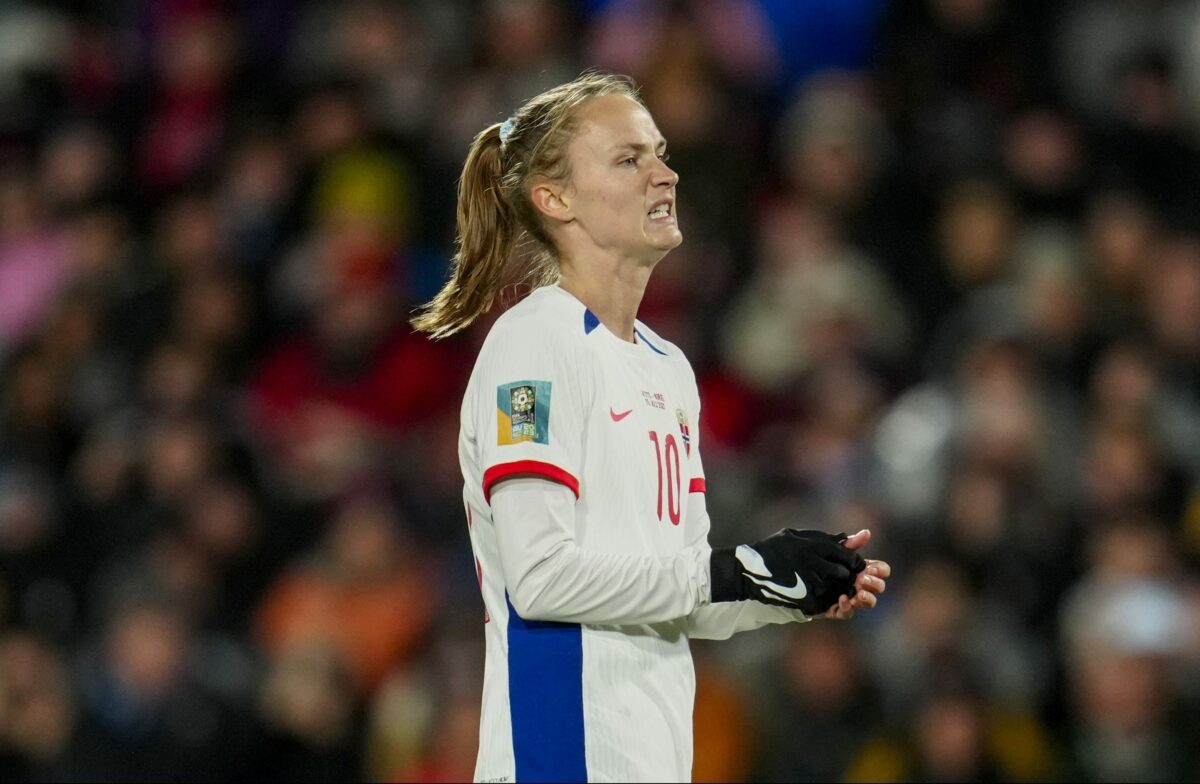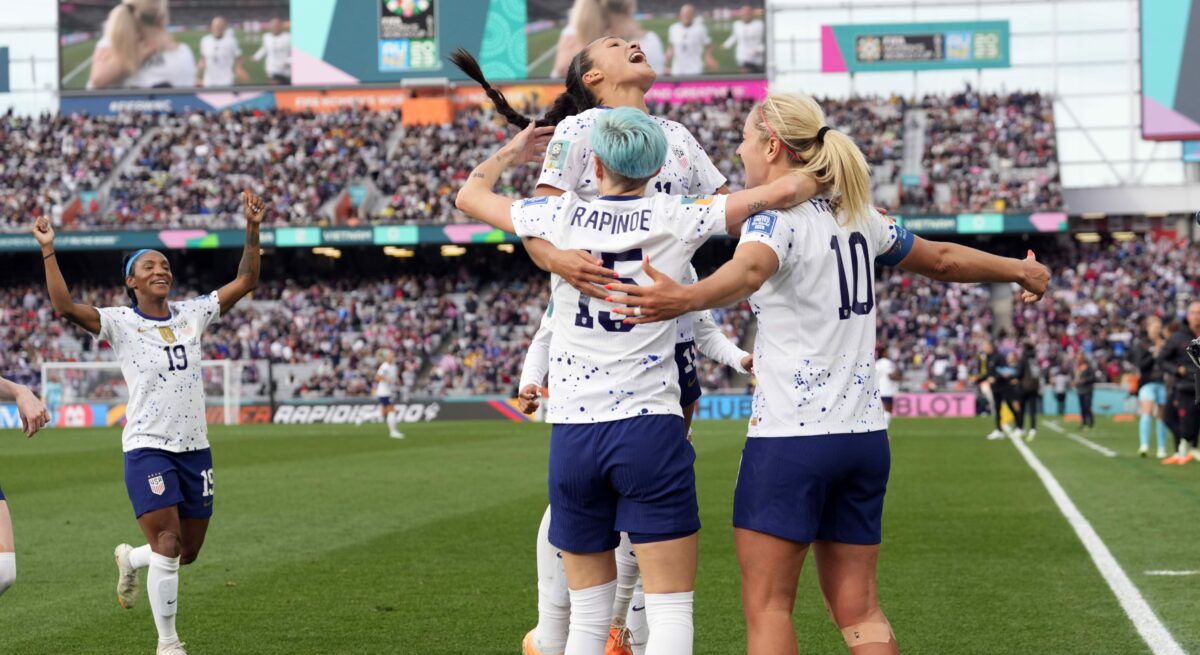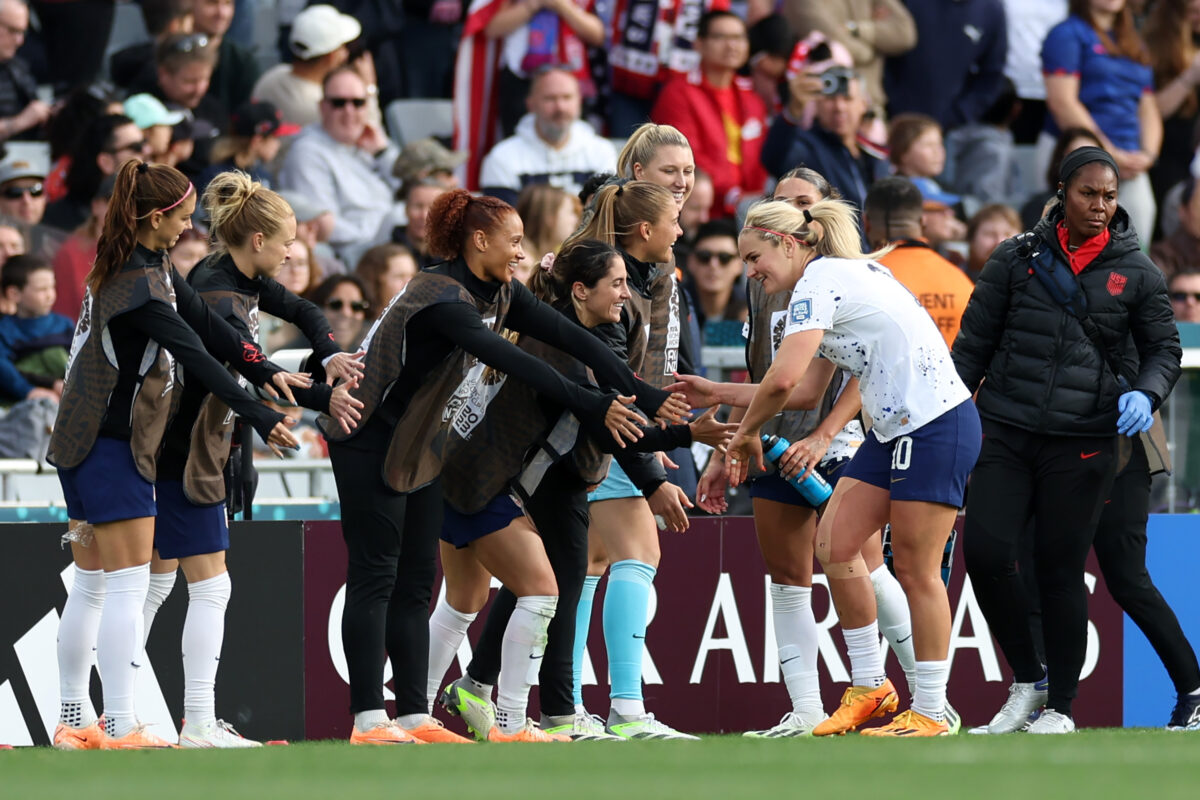The U.S. women’s national team is gearing up for a potentially pivotal World Cup group stage finale, and the watchword is consistency.
An intense 1-1 draw with the Netherlands saw the USWNT struggle for a long stretch before proceeding to dominate the game’s final half-hour. With Portugal — the final Group E foe for the U.S. — winning a few hours later, the standings have tightened significantly, with the USWNT able to finish anywhere between first (assuring the easiest path through the knockout rounds) and third (a stunning early elimination).
Midfielders Savannah DeMelo and Andi Sullivan both agreed that the team wasn’t “in sync” against the Dutch, but expressed optimism that they’re on track to sort that out against a Portugal side known for its defensive organization.
“I think we have shown a lot of pieces, and it’s just a matter of stringing all those pieces together and being very in sync,” Sullivan told reporters at a team press conference. “I think we had a lot of great moments during the Netherlands game, and I just think we want to build off those and make those more consistent, and bring that to the Portugal game.
“They’re a strong team, gonna be a tough game. We know what’s on the line. So, we know we need to bring our best, that they’re gonna bring their best.”
Per both players, one particular focus was the USWNT’s pressing structure, which couldn’t consistently be applied against the Netherlands. At times, attempts from the forwards to lead a higher press weren’t paired with the required step forward from the rest of the team, and in other instances the defense and midfield wanted to push higher while the front line wasn’t ready to take that risk.
“It’s always like a chicken-egg situation, right?” said Sullivan. “If you don’t step high enough, then it’s hard for people behind you to read, and if people behind you aren’t reading it, then it’s hard for you to go [press]. So I think we were all just kind of…we weren’t in sync, and that happens.”
“I think we went in halftime talking about all those things and what we wanted to do, and I think that’s why in the second half, we came out a lot more on the same page,” added DeMelo. “We all needed to go together, we all needed to stay together, and I think it was just more about being in sync with one another.”
The halftime adjustments, along with the emotional charge that came from Lindsey Horan scoring an emphatic equalizer just moments after the U.S. captain clashed with Daniëlle van de Donk, appeared to pay off. However, the USWNT knows that a loss at Eden Park could send them home, and they want to make sure they’re able to hit the ground running against Portugal.
“Hopefully we can [be in sync] earlier in the future,” said Sullivan. “Sometimes when you adjust, it’s going to take a second to get on the same page, and we have full confidence in each other that no matter what we do, we will figure it out, and we will execute.”
USWNT looking for a win, and goals, vs. Portugal
DeMelo and Sullivan also discussed the prospect of not just needing to defeat Portugal to guarantee a first-place finish, but possibly having to pile a few goals on. The USWNT will enter their group finale level on four points with the Netherlands, and hold a two-goal edge on the first tiebreaker (goal difference).
With the Netherlands taking on Vietnam, there is a distinct possibility that the U.S. will need a multi-goal win to keep hold of the top spot in Group E.
“I think the conversation began after the game for us, when we kind of debrief as a team,” said Sullivan, adding that the team is fully aware “that we’re gonna need to play fast and score a lot of goals.”
“We also just want that for ourselves, regardless of the game and the situation,” added Sullivan. “We know our first two performances have been solid, but we know we have more to give, especially in [terms of] putting goals up. And so that conversation has kind of been bubbling, just because we expect that high standard from ourselves.”
[lawrence-related id=21229,24048,24052]

